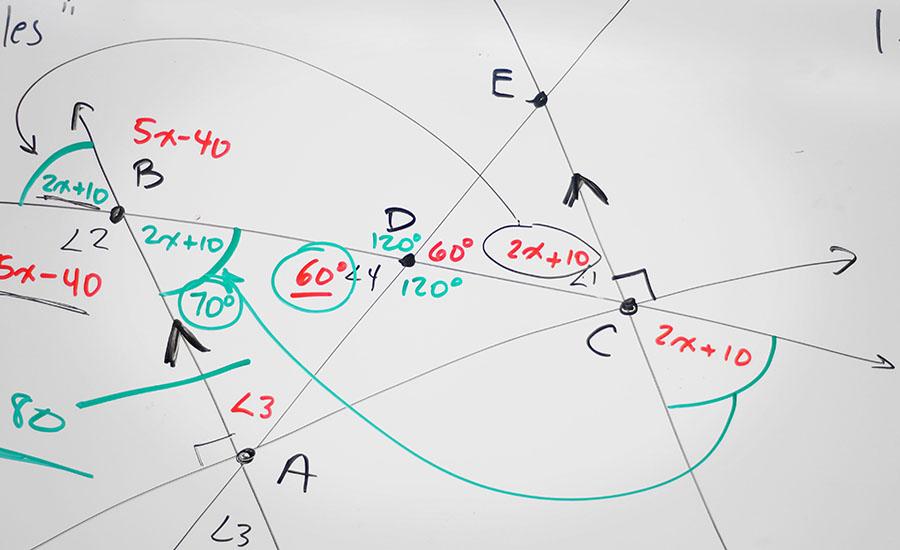Students will design paper gliders to develop an understanding of the principles of flight. This is a low-tech lesson that does not require extensive/expensive supplies. It can be scaled up or down
By 2028, NASA plans to send a mission to Mars to retrieve samples collected by rovers and return to Earth. Student teams are challenged to build a rover and design a way to retrieve as much cargo as
In this physics lesson, students carry out a lab activity to determine Hooke's Law and investigate spring constants.
This two-part lesson models STEM instruction in the context of an ELD classroom. In part 1 (this lesson), the goal is to promote scientific academic discourse in an ELD classroom. Students use a
In this engaging lesson, students determine the period of rotation for the flying pig toy using formulas derived throughout the circular motion unit.
This engaging lesson is an introductory lesson regarding the size and scale of the Universe and objects within. This was designed for high school Astronomy but is easily useable with ages down through
This is a 7th grade Science and Math lesson about how energy flows through a circuit. Students investigate variables that affect the strength of the electrical fields.
7th Grade students will apply what they have learned about electricity and magnetism to understand electromagnets. Students will explore electromagnets and investigate the factors that affect the
Students will learn about the atmosphere and what causes it to form layers. Then, students will identify how the atmosphere interacts with the geosphere, hydrosphere, and biosphere. Students design an
This two-part lesson models STEM instruction in the context of an ELD classroom. In this lesson (part 2), students pose a research question about clouds, weather, and/or climate, and address it with
An introduction to Kepler's 1st Law and ellipses. The lesson includes some guided notes for students as well as a hands on activity where students will draw, measure, explore, and conduct calculations
This lesson and accompanying activity are designed to introduce students to the celestial coordinate system used for location objects and locations in the sky. This lesson will also introduce students
This lesson is intended to build on existing knowledge about a previously learned topic. Students should already know about and be able to apply specific information about a bird species based on a
Students investigate the movement of electricity within a circuit and examine how a circuit can be used to power a device where electrical energy is transferred to complete a task by making wobble
Mixtures and Solutions: Students investigate how various mixtures can be separated. While making a mixture of salt and water, connections are made to global water supplies and the amount of fresh and
This Lesson demonstrates and helps students understand the concept of non-contact forces with a hands-on-activity. In the experiment, the students will be making a magnetic car in groups of 2-4. After
The basics of natural selection will be highlighted using the Natural Selection PhET simulation where students complete a series of challenges. As a result of this experience, students will be able to
The basics of natural selection will be highlighted using the Natural Selection PhET simulation where students complete a series of challenges. As a result of this experience, students will be able to
This Lesson Plan demonstrates how sound waves work. It also helps kids work with their peers and expand their understanding of how sound waves can cause vibrations which can cause matter to move
This is the third lesson in the series of lessons comparing how garden growing techniques determine plant growth and production. In this 3 - day lesson, students will begin with review of the first 2
In this lesson plan, students will embark on a journey to explore and understand the fascinating world of Moon phases. They will begin by sharing their prior knowledge and everyday experiences of Moon
Featured Lesson Plans
Check out these notable lesson plans.

Students use Google Earth Timelapse to observe changes to glaciers over time before completing an investigation on the effects of melting sea ice and land ice on global sea level rise. This

This is the second lesson plan that goes with the series of four lesson plans for the book Song for a Whale by Lynne Kelly. This lesson focuses on vibrations, sounds, and music. The final project is

SNOW
This lesson includes literacy, math, and art about snowflakes. Within math, students will dive into an analysis of angles within a common snowflake. Students will listen to an informational text about


